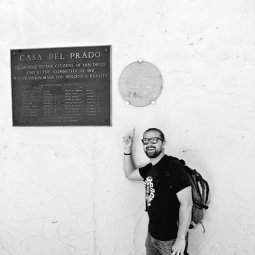
California Policy Corner: Greenbuild Chicago and Advocating for Water Reuse in San Diego
October and November were busy months for the San Diego Green Building Council (SDGBC). Our team along with 18,000 other sustainability advocates met up in Chicago for Greenbuild. The week was highlighted by some amazing speakers, educational workshops, and major announcements. USGBC announced a partnership with BRE, full integration of the STAR Community rating system with LEED for Cities, and the launch of a Living Standard campaign. Additionally, Greenbuild marked the official launch of LEED Zero. Projects now have an option of pursuing Zero Energy, Zero Waste, and Zero Water certification. Or a project could pursue LEED Zero Carbon by meeting net zero carbon emissions from energy consumption and occupant transportation.
Here in San Diego, Zero Net Energy has been at the forefront of our educational offerings and preferred pathway for many new construction projects. We are happy to see this as a recognized certification offering from USGBC and expect many projects in the San Diego region to seek this certification. We are also excited for the Zero Water certification as we have just wrapped up, in October, education for our local community and municipality staff on the concepts, technology, and approaches to Net Zero Water.
SDGBC has received funding from the San Diego Foundation to embark on a Net Zero Water initiative. The purpose of this project is to create a roadmap towards net zero water buildings in the San Diego region. SDGBC is looking to create a regulatory pathway toward ‘Net Zero Water Design’ and generate a parallel civic engagement conduit to build community support for the cause.
Educating the public and stakeholders, increased community engagement, and awareness of the implementation of net zero water designed buildings was achieved through hands-on working sessions with local governments, architects, designers, and water system engineers. Our goal is to seek support for a county-wide Net Zero Water Ordinance all while collaborating with state and national partners like USGBC and International Living Future Institute.
SDGBC spent the last 2 years educating San Diegans on what exactly is ‘Net Zero Water’ and what is the feasibility of achieving net zero water onsite in San Diego County. These concepts were previously very high-level and not discussed in most circles outside of design and engineering realms. Our goal was to bring these types of concepts and design mentality to the masses. We wanted municipal staff to start asking questions about stormwater capture on their projects. We wanted residents to ask how they could permit more advanced greywater reuse systems at their homes. Additionally, we wanted to highlight state legislation that could help make these systems a reality, such as SB 966 – Onsite treated nonpotable water systems.
One point of emphasis SDGBC had was to make sure there was always local government staff present in the room. We chose to have a lot of focus on local government staff for a few reasons. The first is to educate staff on the latest in onsite water reuse strategies and technology to align with regional Climate Action Plan goals. The second reason was, we need champions and advocates within various cities to bring these ideas to people in charge who might not know that these strategies exist or why they should even care.
Through SDGBC’s persistent education and advocacy for Net Zero Water projects, we hope to see more of these projects pursued with easier permitting pathways. That being said, projects shouldn't just be looked at through the lens of design and engineering marvels but also take into account health, wellness, social equity, and resiliency. Through education and the fact that there are so many co-benefits to water reuse, there are more than enough reasons to explore the feasibility of these design strategies through county-wide ordinances or pilot project programs.
There is a lot of work to be done here in San Diego in terms of water reuse. We have the tools, the will, and now - due to drought - the necessity to explore these strategies in our built community, but also the San Diego region as a whole. We will work to put into practice these strategies not only on a building to building scale but integrate our buildings and infrastructure into a wider network of water reuse. As a region, we are well placed to be a leader in the water reuse world.
Written by: Josh Dean, CEM, LEED AP O+M and David Adler, LEED Green Associate
